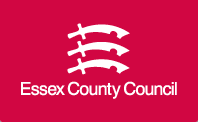Founded 1889 | ||
 | ||
Chairman Cllr John Aldridge,ConservativeSince 02 May 2013 Vice chairman Cllr John Jowers,ConservativeSince 02 May 2013 Seats 75 (38 needed for a majority) Political groups Largest party Conservative Party (45)Official Opposition Liberal Democrat (9)Other opposition parties Labour Party (8) UKIP (6) Green Party (2) Independent (2) Residents for Uttlesford (1) Canvey Island Independent (1) Loughton Residents(1) Seat 75 (38 needed for a majority) Profiles | ||
Essex County Council is the county council that governs the non-metropolitan county of Essex in England. It has 75 councillors, elected from 70 divisions, and is currently controlled by the Conservative Party. The council meets at County Hall in the centre of Chelmsford. It is a member of the East of England Local Government Association.
Contents
Area and responsibilities
At the time of the 2011 census it served a population of 1,393,600, which makes it one of the largest local authorities in England. As a non-metropolitan county council, responsibilities are shared between districts (including boroughs) and in many areas also between civil parish (including town) councils. Births, marriages/civil partnerships and death registration, roads, libraries and archives, refuse disposal, most of state education, of social services and of transport are provided at the county level.
History
The county council was formed in 1889, governing the administrative county of Essex. West Ham, otherwise part of Essex at the time, was a county borough and therefore outside the area of responsibility for the county council. Southend-on-Sea (1914) and East Ham (1915) were also removed. In 1965 Barking, Chingford, Dagenham, Hornchurch, Ilford, Leyton, Romford, Walthamstow, and 'Wanstead and Woodford' were transferred to Greater London. The county council was reconstituted in 1974 as a non-metropolitan county council, regaining jurisdiction in Southend-on-Sea, however the non-metropolitan county was reduced in size in 1998 and the council passed responsibilities to Southend-on-Sea Borough Council and Thurrock Council in those districts. For certain services the three authorities co-operate through joint arrangements, such as the Essex fire authority.
Following the 2013 County Council elections the Conservative Party retained overall control of the council, but their majority fell from twenty-two to four councillors. UKIP, Labour and the Liberal Democrats all won nine seats. Of the three second-placed parties who won nine seats, UKIP gained the largest share of the county-wide vote, more than 10% ahead of the Labour party.[3] The Liberal Democrats remain as the official Opposition, despite winning fewer votes.[3] The Green Party gained two seats on the Council, despite its overall share of the vote falling. The Independent Loughton Residents Association and the Canvey Island Independent Party both returned one member and an Independent candidate was also elected. The next election will be in 2017.
The county of Essex is divided into 12 district and borough councils with 2 unitary authorities (Southend on Sea and Thurrock). The 12 councils manage housing, local planning, refuse collection, street cleaning, elections and meet in their respective civic offices. The local representatives are elected in parts in local elections, held every year.
In regards to the 2 unitary authorities, the county council isn’t used to conduct business, but works closely with the unitary authorites to deliver the “best value service” to all residents.
Young Essex Assembly
The Essex County Council also has a Youth Assembly, 75 members aged between 11 and 19 who aim to represent all young people in their districts across Essex. They decide on the priorities for young people and campaign to make a positive difference. With this, some district and unitary authorities may have their own youth councils, such as Epping Forest, Uttlesford and Harlow.
The elections to the Young Essex Assembly occur in the respective schools in which the candidates are standing. These young people will then go on to represent their school and their entire district.
The initiative seeks to engage younger people in the county and rely on the youth councilors of all status to work closely with schools and youth centers to improve youth services in Essex and help raise voice concerns of younger people in Essex.
12 of the members will then be voted for by the remaining youth councilors to go to the UK Youth Parliament to represent Essex.
Political control
As of 10 May 2016, the composition of the council is as follows:
